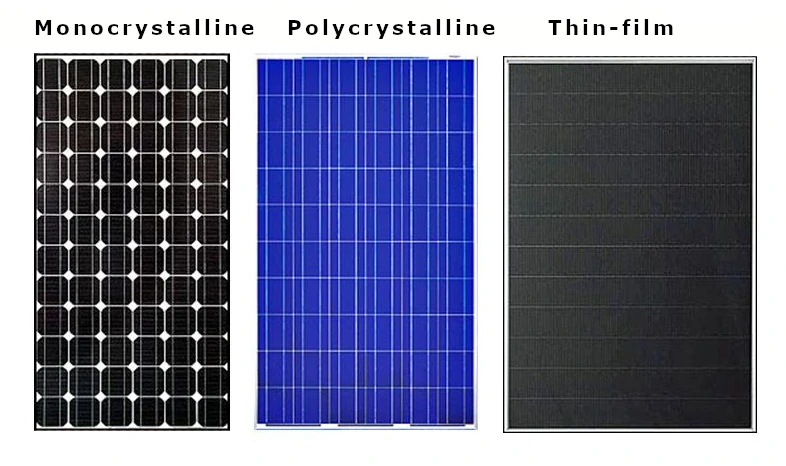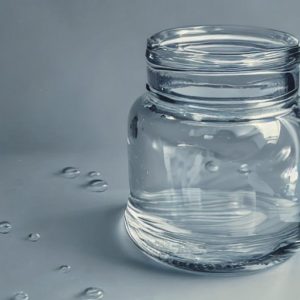Efficiency and types of solar panels
Welcome to our comprehensive post on efficiency and types of solar panels, where we explore the various technologies and advancements driving the renewable energy revolution.
To ensure optimal performance and detect any potential issues with your solar panel system, it is important to monitor the efficiency of your solar panels. By comparing calculations and observing changes in efficiency, you can identify panel degradation or sudden drops that may indicate a problem.
To calculate the solar panel efficiency of an individual panel, you will need to measure its surface dimensions and determine the total production area in square meters. Additionally, you should know the current power production in kilowatts.

The kilowatt output
There are different methods to determine the kilowatt output. For a rough estimate, you can use the panel’s watt rating and divide it by 1,000. For more accurate results, you can use a solar meter or a multimeter to measure volts and amps. Multiply these values to obtain the total watts, then divide by 1,000 to convert it to kilowatts.
Once you have the kilowatt output and the total surface area of the solar panel in square meters, divide the panel’s output by the surface area. Multiply the result by 100 to obtain the efficiency rating.
For example, let’s consider a solar panel with dimensions of 182 cm by 106 cm, resulting in a surface area of 1.93 square meters. If the panel is producing 400 watts or 0.40 kW, dividing 0.40 by 1.93 gives us 0.207. Multiplying this by 100 yields an efficiency reading of 20.7%.
Efficiency and types of solar panels: different Types
When it comes to solar panel installations, three primary types are commonly utilized: monocrystalline, polycrystalline, and thin-film. Let’s explore each type and understand their respective efficiency ranges and suitable applications:
Type of Panel | Efficiency Range
Monocrystalline | 15% – 23%
Polycrystalline | 13% – 17%
Thin-film | 7% – 14%
Monocrystalline: The Optimal Efficiency Choice
Monocrystalline solar panels are widely acclaimed as the most efficient option, commonly selected for larger energy systems in both commercial and residential settings. However, it’s worth noting that the panel sizes can vary, making monocrystalline panels suitable for smaller installations as well.
Pros:
- High efficiency range of 15% to 23% due to their utilization of silicon with a high purity rating.
- Occupies less space compared to polycrystalline and thin-film panels.
- Longevity is a key advantage, with monocrystalline panels lasting over 25 years due to the stable and inert properties of silicon.
Cons:
- Relatively higher price point due to their intricate construction process.
- Not recommended for cold-weather climates, as snowfall can potentially damage the solar cells, leading to system failure.
Polycrystalline: The Affordable Alternative
Polycrystalline solar panels derive their name from the fact that they are composed of multiple pure silicon crystals fused together. While having more crystals may not necessarily be advantageous, polycrystalline panels do offer affordability compared to their monocrystalline counterparts. They come in a range of power settings, from 5W to 250W and beyond, making them suitable for both small and large-scale installations.
Pros:
- Simpler manufacturing process translates to a lower price point compared to monocrystalline panels.
- Reduced waste during the production process, making them a more environmentally friendly option.
- Like monocrystalline panels, they exhibit durability and a long lifespan, making them an appealing choice for budget-conscious homeowners.
Cons:
- Lower efficiency range of 13% to 17% due to the lower purity of the silicon used in their construction.
- Polycrystalline panels require more space to generate an equivalent power output as monocrystalline cells.
Thin-Film: Ideal for Portable Applications
Thin-film solar panels, distinct from their silicon-based counterparts, are lightweight and highly portable. However, they do possess the lowest efficiency among solar panel types. These panels are best suited for installations that require moderate power output, with flexibility and portability being their primary advantages.
Pros:
- Simplified and cost-effective production process compared to crystalline panels.
- Particularly suitable for solar transportation applications, such as bus rooftop installations and refrigeration units for cold-storage trucks.
Cons:
- Not recommended for rooftop installations due to the need for a larger surface area to generate sufficient solar power.
- Less durable than crystalline panels, leading to shorter lifespans. Thin-film panel installations typically come with limited warranty options, which homeowners should consider based on their long-term plans for residing in their homes.
Efficiency and types of solar panels, other important factors:
Sunlight Hours:
Solar panels can generate electricity even in various light conditions, including cloudy days. However, their efficiency significantly decreases during periods with limited light. To achieve optimal performance, approximately four hours of direct sunlight per day is generally necessary. Nonetheless, solar panels can still produce a significant amount of power during daylight hours with indirect sunlight or on overcast days. The total number of sunlight hours directly impacts the overall efficiency of the panels in the short term, but there are no long-term effects if they don’t receive the optimal amount of sunlight daily.
Inverter Efficiency:
The inverter plays a crucial role in converting the generated direct current (DC) from the solar panels into the alternating current (AC) electricity used in homes. Most inverters have a conversion efficiency ranging from 97% to 99%, resulting in minor energy losses.
Temperature Coefficient:
Solar panel efficiency ratings are measured under standardized laboratory conditions known as Standard Test Conditions (STC), which include a temperature of 25 degrees Celsius (77°F). The temperature coefficient of solar panels measures the percentage of efficiency loss when the panel’s surface temperature exceeds 25 degrees Celsius. For every degree Celsius above 25, the panel’s efficiency decreases by the coefficient rating percentage. Higher temperatures can cause a drop in efficiency, with each panel having its own temperature coefficient.
Damp Heat:
Damp heat testing involves subjecting solar panels to rigorous conditions in a chamber with 85 degrees Celsius (185°F) temperature and 85% humidity for 1,000 hours. This test aims to simulate and accelerate the effects of long-term exposure to harsh environmental conditions. While damp heat testing doesn’t directly measure efficiency, it assesses the panel’s integrity regarding delamination and corrosion, which can indirectly impact overall efficiency.
Thermal Cycling:
Thermal cycling tests solar panels to determine their ability to withstand a wide range of temperatures. During thermal cycling, components of the solar panels may expand and contract, potentially affecting their efficiency.
Solar Panel Orientation:
South-facing roofs are ideal for maximizing electricity generation from solar panels. West-facing roofs are the next best option, followed by east-facing roofs. North-facing roofs are generally less favorable, with west and east-facing panels generating up to 15% less energy than a south-facing array, while north-facing panels may lose as much as 20%. The installation angle of solar panels is also crucial and varies based on latitude, typically falling between 30 and 45 degrees. Correct orientation and angle are particularly important during winter when the sun is lower on the horizon, as they can significantly impact energy production.
Environmental Factors:
Several environmental factors can affect solar panel efficiency. Temperature plays a role, with panels performing best around 77°F, and efficiency declining as the surface temperature exceeds 149°F. The color of the back sheet protecting the panels can also impact efficiency, as darker colors absorb more heat, potentially reducing conversion efficiency. Extreme weather conditions such as snow, wind, rain, and hail can influence efficiency. Snow accumulation on panels hampers sunlight penetration, while wind can cool panels and increase their efficiency if sunlight is still present. Rain does not directly affect efficiency, but rain clouds can reduce the amount of sunlight reaching the panels. Hailstorms pose a slight risk of damaging the panels. Additionally, dust and grime accumulation over time can obstruct sunlight and decrease efficiency, requiring periodic cleaning for optimal performance.
Now that you know about efficiency and types of solar panels, if you like, check out our selection of the newest models on Amazon.
Alternatively, take a look at agrivoltaics, in case you’re not familiar with it.


5 thoughts on “Efficiency and types of solar panels”
Comments are closed.